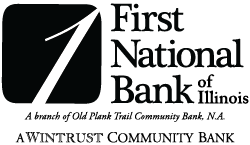Tried and True Risk Management Strategies for Mid-Market Companies
Creating a proactive plan with the right tools and tactics.
Tried and True Risk Management Strategies for Mid-Market Companies
Creating a proactive plan with the right tools and tactics.
Emerging stronger from a time of crisis is the mark of a successful business. Companies capable of navigating unexpected challenges do so with an effective risk management plan.
Business leaders today must treat risk management as an essential component of protecting their business if they hope to ensure success tomorrow. Fortunately, advancements in technology, stronger awareness, and increased vigilance are helping businesses become more proactive in identifying and mitigating risks before they materialize.
Understand the risks
Like most businesses, mid-market companies operate in a variety of environments and encounter a range of risks that have the potential to impact operations and finances. These risks span inventory evaluations, production processes, and of course, industry-specific challenges. Consider, for instance, the daily risks food and beverage businesses face when it comes to tainted products, or what staffing agencies must manage concerning the validity of employee paperwork.
Ultimately, businesses must be able to understand the risks associated with their line of work and put themselves in position to learn and adapt when unforeseen events occur. For example, despite the challenges of the COVID-19 pandemic, some businesses quickly found market opportunities to capitalize on.
“The businesses that succeed in getting through a storm are the ones that act the fastest after a crisis occurs,” said Robert Shanahan, executive vice president of Wintrust Business Credit. “During the pandemic, some businesses acted as the exception when faced with the challenges, getting ahead of their competitors to navigate through the new risks and come out stronger on the other side.”
Whether big or small, it’s crucial for businesses to identify, assess, and manage risks effectively to navigate uncertainties and maintain a competitive edge. Implementing proactive risk management strategies not only helps keep potential issues at bay but can also help businesses grow when harnessed properly.
“A bad business hasn’t identified the risks, an average business has identified the risks, and a successful business has identified the risks and responded in a way that allows them to separate themselves from the competition,” explained Shanahan. “If all businesses approached it the same way, there would be no differentiation. We wouldn’t be able to identify the standout organizations from the rest.”
Digging deeper
Among the various risks that businesses face, credit risks and price fluctuations stand out as the most significant, demanding thoughtful planning and strategic approaches.
Fluctuating prices often pose a challenge to businesses, impacting their profitability and heightening inventory-related risks. These price fluctuations result from various factors, such as market dynamics and disruptions in the supply chain.
“When tariffs were put on foreign imports during the pandemic, it had a significant impact on the metals market since there was a steady inflow of foreign metals at the time,” said Shanahan. “Prices increased by 15 – 20% overnight, which had a drastic effect on the supply and demand of foreign steel. We’ve seen this happen across other industries, as well.”
In the face of volatility, businesses must navigate these obstacles deftly. One such measure for doing so is implementing inventory management systems, which allows businesses to optimize their supply chain and gain valuable insights into their stock levels, leading to reduced overhead costs and improved overall efficiency.
Additionally, credit risks are a common concern for mid-market companies. To mitigate these risks effectively, businesses should conduct thorough credit assessments, establish credit limits for customers, implement credit monitoring systems, and maintain proactive communication with customers to ensure timely payments. Regularly reviewing and updating these practices will help businesses adapt to changing market conditions and maintain financial stability in the long run.
Developing frameworks
With the multitude of factors at play, developing and maintaining a risk management framework can feel dizzying. However, the process becomes less overwhelming when businesses adhere to a few rules of thumb, effective communication chief among them.
Clear channels of communication among customers, employees, and other stakeholders are imperative to identifying and addressing risks promptly and transparently. When parties are left out of the loop, the effects can be disastrous.
“Even businesses with the most thought-out solutions fall short when there’s a lack of communication between businesses and customers,” said Shanahan. “Open lines of communication both ways are absolutely essential.”
Knowledge sharing is another key aspect of a strong risk management framework. Businesses need to use what they know and ask about what they don’t. As industry-specific knowledge and experience enable tailored strategies, mid-market companies can leverage this expertise by engaging risk management consultants or forming internal risk management teams consisting of individuals with industry-specific experience.
“You have to put yourself in a position to understand the risks that are in front of you, and you also have to be in a position to learn how to best address them expeditiously with experienced management,” said Shanahan. “As you would have an experienced captain at the helm of the ship, you would have an experienced leader in the process that can take on the known and the unknown.”
Anticipate with information
In tandem with industry knowledge, take advantage of early indicators that make it possible to anticipate risks. Implementing robust data analytics systems and utilizing market intelligence tools can provide mid-market companies with valuable insights for early detection and informed decision-making. And in addition to leveraging the latest tech, it’s always beneficial for teams to keep their ears to the ground.
“The challenge lies in obtaining timely information about any changes to proactively address them,” said Shanahan. “Staying informed through close customer relationships and keeping ahead of news developments are crucial tactics in navigating the evolving risk landscape.”
Additionally, mid-market companies need to consider the impact of changing regulations on risk management protocols. Adapting processes to changing regulations is crucial for compliance; companies should closely monitor regulatory developments, engage legal experts, and establish procedures to promptly update protocols accordingly.
“Staying on top of the latest regulations creates a sustainable path,” said Shanahan. “Knee-jerk reactions and late communication really limit the solutions.”
The role of risk officers
Risk officers play a crucial role in executing all aspects of an organization’s risk management framework, but what separates successful officers from the rest?
Effective risk officers understand the significance of clear and transparent communication. They establish open lines of communication with clients and employees, actively engage in risk discussions, and provide regular updates on risk-related matters.
Building trust with clients and colleagues is also essential to success, as risk officers have the responsibility of carrying the team through crises while being mindful of how they’re approaching the situation.
“A lot can be gained by watching a risk officer through a crisis,” said Shanahan. “Until you get through that storm with experienced management, you never learn to appreciate trust and understand how people operate.”
Putting plans into action
Successful risk management is an important part of a mid-market company’s journey toward progress and prosperity. It requires a comprehensive and proactive approach, involving the right programs, products, and people while remaining committed to an effective strategy.





